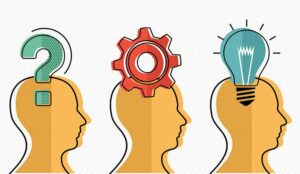In the world of machine learning, emotion analytics is just one of many tools that businesses can use to better understand their customers’ needs.
Emotion analysis can identify nuances in speech and behaviors, helping organizations know when a customer is frustrated, angry, happy, or more.
When you can better understand how customers feel about your brand, products, and services, you can more effectively take action to improve experiences and outcomes.
In this blog, you’ll learn:
- What is emotion analytics?
- Emotion analysis vs. sentiment analysis
- How emotion analysis benefits businesses
- Detecting customer emotions
- Frequently asked questions
What Is Emotion Analytics?
Having empathy for your customers is more important than ever.
Emotion analytics is the process of using data gathered from written or verbal conversations, behaviors, and video to provide insights into the emotions of the people involved.
Typically, emotion analytics are used by businesses and customer contact centres to decipher a customer’s emotions and provide the help they want and need. The process can also be used for other purposes, like detecting emotions from video viewers or ad audiences.
Emotion Analysis vs. Sentiment Analysis
Despite sounding similar and having similar purposes, emotion analysis and sentiment analysis aren’t the same processes.
Although complex in its own right, sentiment analysis is a more basic process. It uses artificial intelligence and machine learning to pick up clues in a conversation, indicating whether the conversation is positive, negative, or neutral.
This can help customer service agents quickly react to fix the problems that led to a neutral or negative overall tone.
While sentiment analysis does detect emotion generally, it doesn’t pinpoint specific emotions.
That’s what emotion analysis is for. An emotion analytics system, such as a conversation intelligence platform, digs deeper into the overall sentiment to determine more precisely how a person feels.
For example, while sentiment analysis might detect a neutral tone for the conversation after a customer responds to an agent’s upsell, emotion analysis might identify that the customer seems bored or unimpressed, providing additional context for the neutral conversation.
How Emotion Analytics Benefits Businesses
Because emotion analytics can be used in a variety of applications, from identifying facial expressions in video to detecting emotions in chatbot conversations, businesses in virtually all industries can benefit from it. Here’s how.
It Takes a Holistic Approach to Understanding a Person’s Interests
Emotion analytics pays attention to not just what someone says, but depending on the tools used, it can also look at facial expressions and behaviors to identify emotions. In this way, it has the power to gather big-picture data about a person’s emotions and opinions.
Say, for example, a business conducts a video survey with a customer using a mobile app, which gathers data about the customer’s facial expressions and conversation during the survey.
Each time the survey presents the customer with a photo of a new product, the app can gather emotion data based on the customer’s expressions when they see the photo.
The app can also detect emotions when the customer speaks their thoughts and identify emotions like interest or boredom as they interact with the learning tools about each product.
This emotion analytics-based survey could give the company a well-rounded view of what that person enjoys or dislikes.
It Can Provide Invaluable Insights Into Brand Perception
Businesses can weave emotion analytics into customer contact points, like emails, chatbots, and social media, to monitor brand perception.
Emotion analytics and sentiment analysis work well together here, offering a general opinion of the brand as well as key emotions driving that opinion.
For example, emotion analytics can monitor social media mentions about a brand to identify the most powerful emotions behind those mentions, like anger or excitement.
It Can Catch Negative Emotions in Real Time for Immediate Correction
Companies can use emotion analytics tools during customer conversations or interactions to curb potential problems immediately.
We see this frequently in customer call centres using conversation analytics tools. When negative emotions are identified on the customer end, it notes them in reports and alerts agents on the spot, allowing the agent to correct the situation quickly and companies to identify areas needing improvement.
Detecting Customer Emotions
A robust conversation analytics solution works behind the scenes, collecting and analyzing data from every customer interaction across all channels to gain insight into the customer journey, including customer sentiment, emotion, and the overall customer experience.
This sophisticated technology provides deep insight into customer opinion with precise, AI-powered analysis.
Frequently Asked Questions
What Is the Purpose of Emotion Analytics?
Emotion analytics understands intricate differences between related emotions to distinguish exact emotions from a conversation or behavior.
Businesses use emotion analytics to better understand customers’ feelings about support interactions, ad campaigns, and products.
What Is an Example of Emotion-Based Analytics?
Say a person walks into an electronics store to look for headphones. The cameras placed around the store can follow the customer’s interactions with employees and products.
Emotion analytics technology can pull data from those videos to detect the customer’s emotions throughout the store.
For example, analytics might show that the customer was happy upon arriving but then became confused when looking at the variety of headphone options at the store.
After asking a friendly employee for help finding what she needed, the customer was grateful. She bought the headphones and left the store satisfied with her purchase.
This tells the store that the customer’s overall experience was positive but that it may need to make some changes to the headphone section to make shopping for its products easier for customers.
Can Sentiment Analysis Detect Emotions?
Sentiment analysis detects emotions broadly rather than specifically. For instance, sentiment analysis might sense that a customer’s tone perked up when presented with an upgrade offer, pointing the conversation in a positive direction. However, it won’t pick up the customer’s exact emotion, which was surprise.
Think of sentiment analysis as a process that helps gauge an opinion, whereas emotion analytics detects precise emotions.
This blog post has been re-published by kind permission of CallMiner – View the Original Article
For more information about CallMiner - visit the CallMiner Website
Call Centre Helper is not responsible for the content of these guest blog posts. The opinions expressed in this article are those of the author, and do not necessarily reflect those of Call Centre Helper.
Author: CallMiner
Published On: 28th Nov 2023 - Last modified: 9th Dec 2024
Read more about - Guest Blogs, CallMiner






 CallMiner is the leading cloud-based customer interaction analytics solution for extracting business intelligence and improving agent performance across all contact channels.
CallMiner is the leading cloud-based customer interaction analytics solution for extracting business intelligence and improving agent performance across all contact channels. 

































